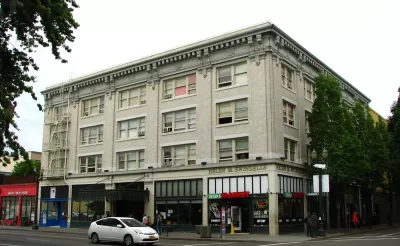Popular in the early 20th century, the rooming house fell out of favor, with the type now banned in many cities. With no end to the housing crisis in sight, cities are rethinking their regulation of this affordable housing option.

Single-room occupancy housing (SROs), which in the 1950s made up 10 percent of New York’s housing stock, could make a comeback as the housing crisis forces Americans to reconsider housing options that have fallen out of favor, writes Jake Blumgart for Governing.
Blumgart provides some background: “In 1955, New York City banned the new construction of SROs in the city. Zoning codes everywhere were tweaked to discourage anything but single-family residences. By one estimate, 1 million SRO units were lost between the 1970s and the 1990s.”
With the city receiving 500 complaints about illegal single-room occupancies each year, the demand for rooming houses is palpable in Philadelphia. One city councilmember wants to reverse that trend, calling on the city to “legalize single-room residences in all multifamily and commercial zoning districts.”
The bill isn’t without its critics in the council. “Multiple council sources have told Governing that three district councilmembers planned to introduce amendments to Green’s bill that would carve their neighborhoods out of his legislation. The bill still hasn’t been scheduled for a hearing, and council will soon break for the summer.”
Former head of Philadelphia’s Department of Licenses and Inspections (L&I), Dave Perri, has been advocating for zoning reform since 2018, when a fire in an illegal rooming house killed three people. Perri wants to see rooming houses allowed in all neighborhoods, arguing that single-family zoning no longer fits people’s needs. “He points to more single people living alone than in the past, overcrowded multi-generational households, and non-traditional family formation as pressures on the existing legal paradigm.” Single-room occupancy can fill a gap in the affordable housing supply and provide a lifeline for low-income renters.
FULL STORY: SRO Housing, Nearly Zoned Out of Existence, Could Re-Emerge

Maui's Vacation Rental Debate Turns Ugly
Verbal attacks, misinformation campaigns and fistfights plague a high-stakes debate to convert thousands of vacation rentals into long-term housing.

Planetizen Federal Action Tracker
A weekly monitor of how Trump’s orders and actions are impacting planners and planning in America.

In Urban Planning, AI Prompting Could be the New Design Thinking
Creativity has long been key to great urban design. What if we see AI as our new creative partner?

King County Supportive Housing Program Offers Hope for Unhoused Residents
The county is taking a ‘Housing First’ approach that prioritizes getting people into housing, then offering wraparound supportive services.

Researchers Use AI to Get Clearer Picture of US Housing
Analysts are using artificial intelligence to supercharge their research by allowing them to comb through data faster. Though these AI tools can be error prone, they save time and housing researchers are optimistic about the future.

Making Shared Micromobility More Inclusive
Cities and shared mobility system operators can do more to include people with disabilities in planning and operations, per a new report.
Urban Design for Planners 1: Software Tools
This six-course series explores essential urban design concepts using open source software and equips planners with the tools they need to participate fully in the urban design process.
Planning for Universal Design
Learn the tools for implementing Universal Design in planning regulations.
planning NEXT
Appalachian Highlands Housing Partners
Mpact (founded as Rail~Volution)
City of Camden Redevelopment Agency
City of Astoria
City of Portland
City of Laramie





























